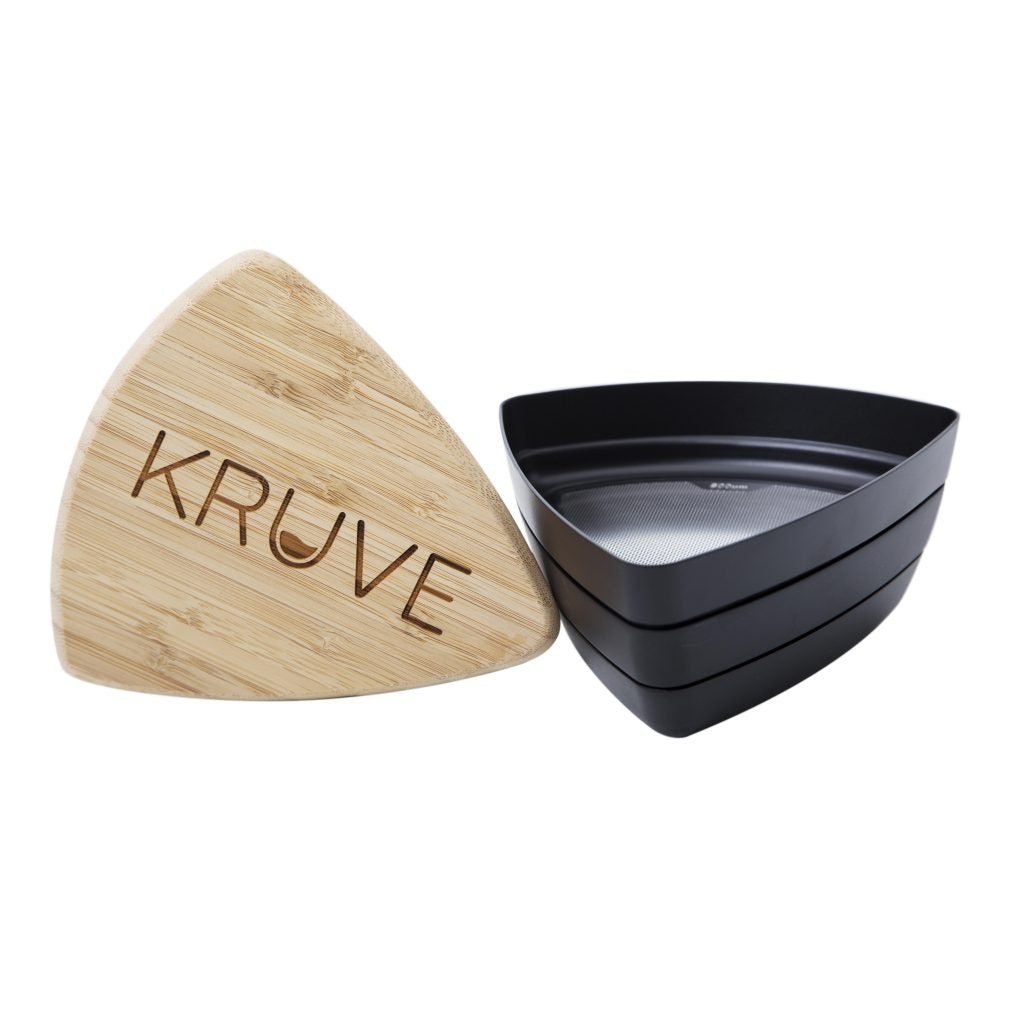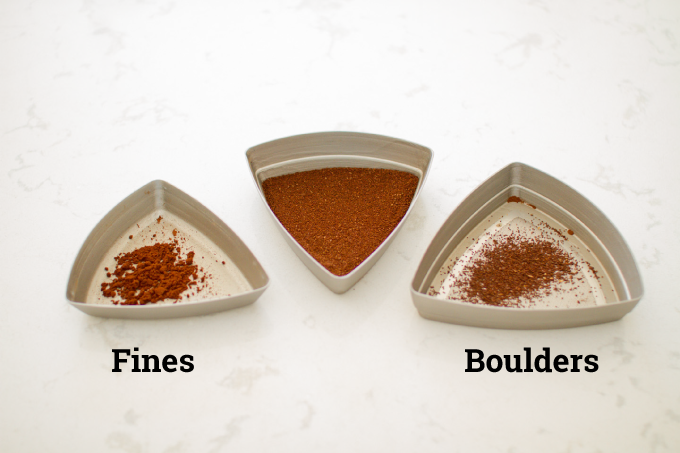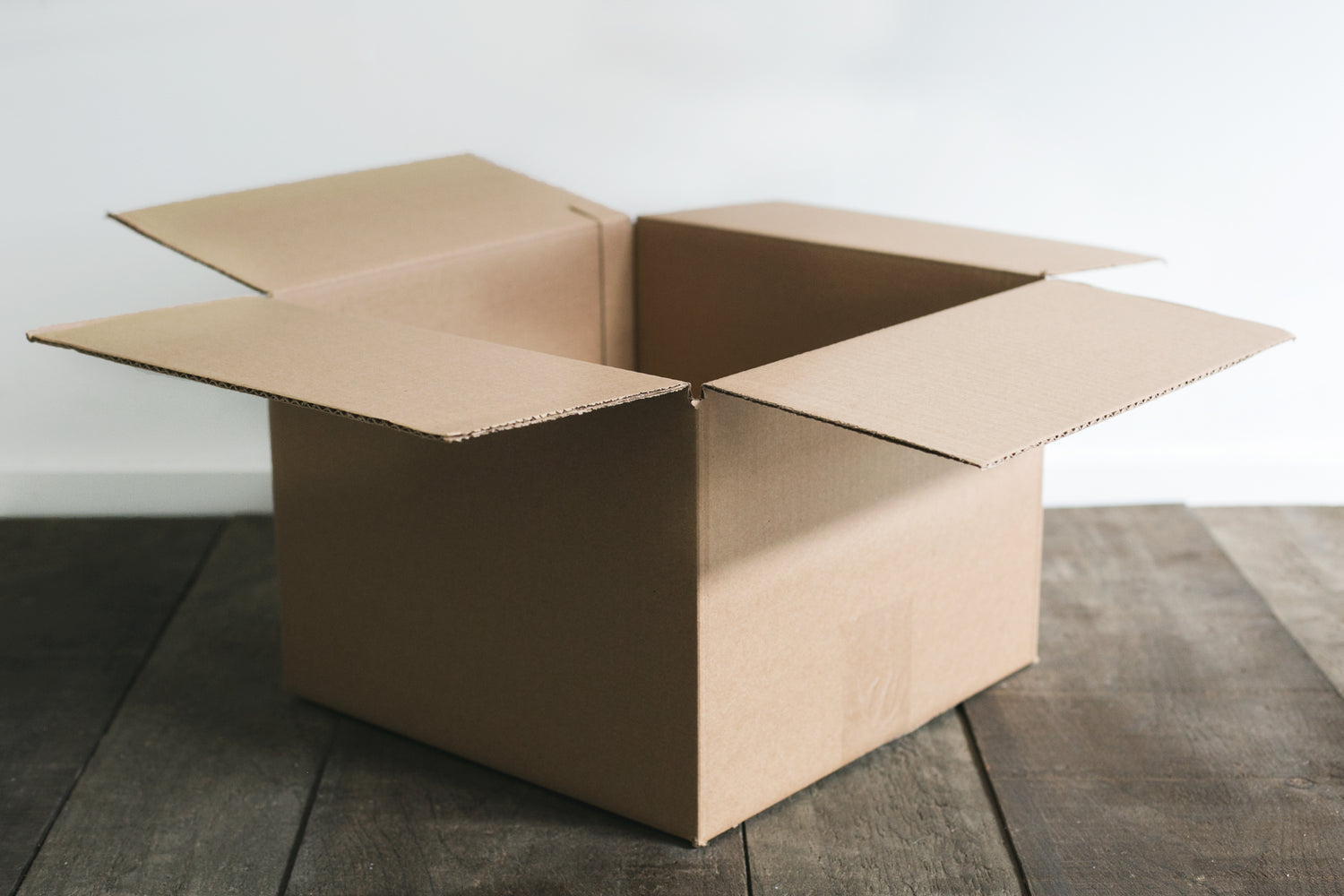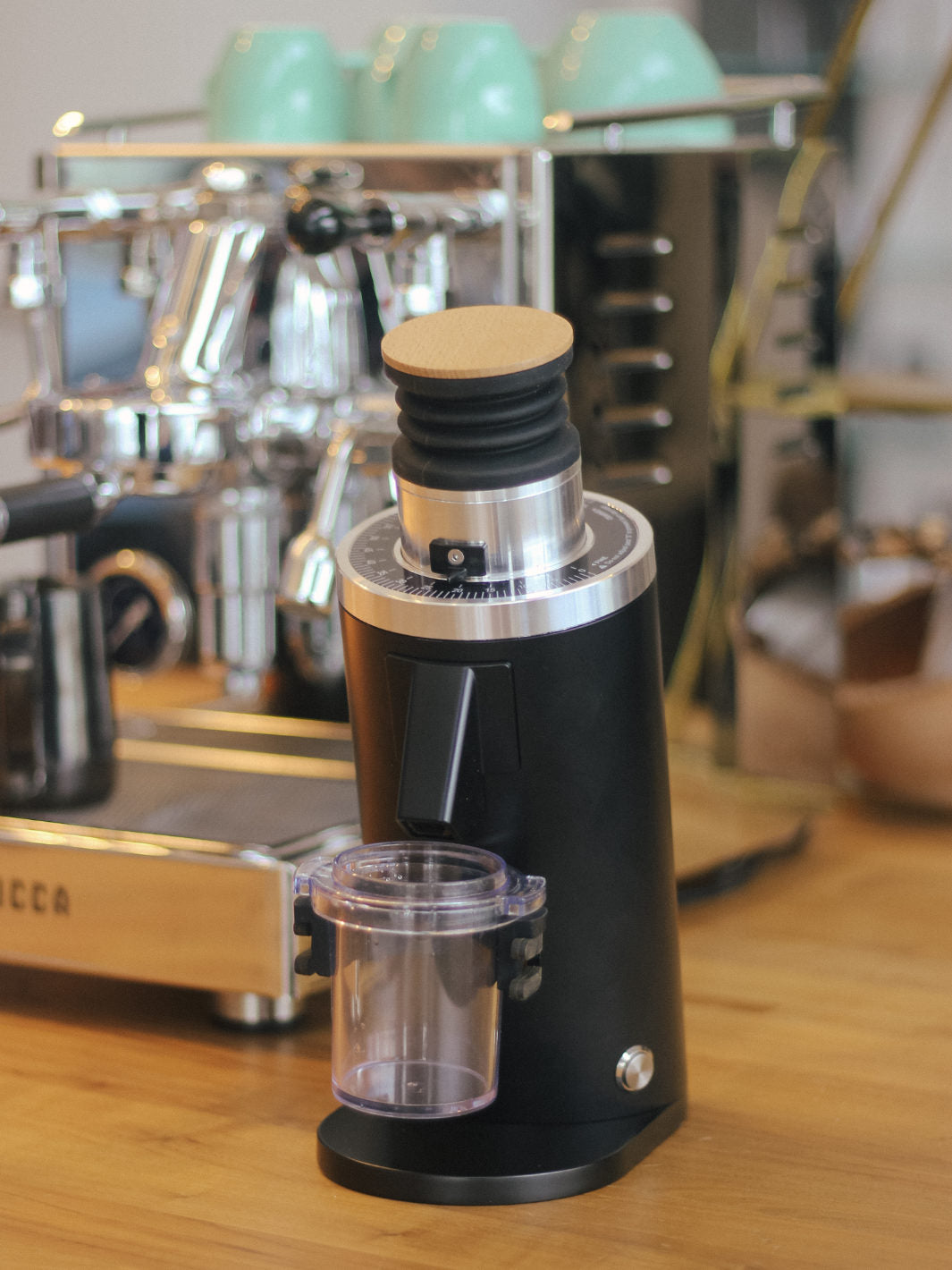Sifting coffee?? What the heck is that?

The act of sifting coffee grinds began as a geeky barista endeavour, using the method as a “secret weapon" to enhance competitive coffee brewing. The edge it provided baristas with was sweeter coffees and less bitterness; this almost guaranteed the coffee to have more flavour-clarity, and a cleaner finish. But what is sifting? Sifting, in most cases, means the omission of the smallest coffee grinds with the most surface area. These are called “fines” and the process of removing them results in less astringency in the final brew. Given their large surface area, fines tend to extract at the fastest rate, allowing water to easily penetrate and dissolve compounds into the cup. Brewers would sift the coffee by vigorously shaking coffee grinds in a container with a screen of some sort on the bottom, to filter them through the holes in the screen, dividing the particles up between the bigger ones on top and smaller ones at the bottom. But sifting wasn’t always on the radar of most home brewers or baristas though. Initially it was more for the adventurous coffee geeks who would experiment with the trick themselves, allowing for better coffee made with cheap, crappy home grinders.
The EK-43 grinder has become the standard for filter brewing in cafes largely in part to how well/efficiently it grinds coffee, enabling baristas to push extractions without any astringency or mucky flavours. That is largely in part because of the grinder’s massive vertical burrs which produce a very tight particle distribution spread. To wit, the grinds end up being more uniform and even in size, which allows for extractions to surpass the norm—the complete opposite of most home grinders. But even an EK-43 still produces potentially undesirable particle sizes. These offending particles are grouped as “fines” and “boulders.” Fines are particles under 300 microns in size, and boulders are particles over 1100 microns. Both are unavoidable in all grinding situations, but can be eliminated via sifting, as an incremental step toward that perfect grind.

I remember first hearing about the Kruve sifter back in early 2016 from some barista friends. There was hype behind it and their Kickstarter campaign had really taken off. Some of my colleagues even invested in it, but this was at a time when I was in the midst of moving across the country, so I didn't have much time to check it out. After my move from Calgary to Montreal, I got resettled, and got back into experimenting with coffee. I managed to finally get my hands on a Kruve sifter, and began to play around with it. I remember thinking: “This is so much easier than how we used to sift coffee before!” With my old setup, using a geological sieve, I often covered my entire kitchen in coffee grinds, trying to sift. But this was easy to use and had far less limitations than my ad hoc setup. I began to experiment with different Kruve screen combinations-- and began thinking more about the role of boulders in coffee.

The removal of boulders is often is something that can be overlooked as people tend to focus on fines, but they’re another component of the grind size spectrum that have their own inherent problems—or benefits—depending on how you see it. Boulders are harder to extract than fines as they’re not as soluble, though they tend to add more sweetness. Their inclusion in a brew means you will need additional smaller particles to achieve your target extraction. It’s a balancing act, and there are even some schools of thought that say boulders are the enemy, not fines. Some people believe that because they extract at a lower rate, and because they extract slower, they’re inefficient and lead to under-under-extracted coffees. For my own preferences, I tend to include boulders, and I adjust my brewing style around them, so I can still achieve 20% - 22% extractions (which is pretty much the standard desirable range). However, with sifting it’s important to not get too focussed on theory and numbers, and to let your taste buds guide you. Heck, sometimes I think fines are good, too. They’re not the enemy either; the real enemy is bad roasting, bad water, and bad brewing habits.

The functionality of the sifter is quite easy. I don’t know if there is a logic to the teardrop design, but it doesn’t seem to affect the grip of the unit or the process of the sifting. Inserting the screens themselves can be a tricky, I will say. They are pliable enough to snap into place, but it can take some getting used to. Once snapped in securely, you can be sure that the coffee will not leak out around the edges. The unit is not too heavy or cumbersome, and after about 3 minutes of shaking and agitation, you should arrive at your preferred grind. (To this end, you must take into account that you will be omitting a certain percentage of your coffee, so sifting all the time could actually get pricey.) Cleanup of the unit can be messy, and I’d recommend giving the screens a wipe-down every now and then, as they will trap some coffee and you don’t want this to accumulate over time. It has a relatively small footprint in your kitchen — I tuck mine below my coffee gear on my brew bar shelf — and it comes with a handy screen holder, too.

Overall I really like this product. It addressed a problem that existed in the coffee world for years, as both home brewers and baristas alike had to come up with quirky, creative solutions to sift their coffee. And again, I don’t think using the Kruve on a daily basis is going to vastly improve your coffee brewing life, because you don’t always want to sift. But it’s sure nice to have. I pull it out and see how the coffee tastes with and without it. Often times it will improve mediocre coffee, or it helps me when my grinder burrs are getting dull and just can’t keep up. It’s like having a really expensive hand-made Damascus steel chef’s knife— are you going to use it for every meal you cook? No, probably not. But can it enhance your cooking experience? Definitely.




